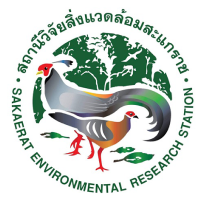Keywords :
Bridge; Drainage Culvert; Mortality; Ophiophagus hannah; Road Crossing; Space Use
บทคัดย่อ :
1. Global road networks continue to expand, and the wildlife responses to these
landscape-level
changes need to be understood to advise long-term
management
decisions. Roads have high mortality risk to snakes because snakes typically
move slowly and can be intentionally targeted by drivers.
2. We investigated how radio-tracked
King Cobras (Ophiophagus hannah) traverse
a major highway in northeast Thailand, and if reproductive cycles were associated
with road hazards.
3. We surveyed a 15.3 km stretch of Highway 304 to determine if there were any
locations where snakes could safely move across the road (e.g., culverts and
bridges). We used recurse analyses to detect possible road-crossing
events, and
used dynamic Brownian Bridge Movement Models (dBBMMs) to show movement
pathways association with possible unintentional crossing structures. We
further used Integrated Step Selection Functions (ISSF) to assess seasonal differences
in avoidance of major roads for adult King Cobras in relation to reproductive
state.
4. We discovered 32 unintentional wildlife crossing locations capable of facilitating
King Cobra movement across the highway. While our dBBMMs broadly revealed
underpasses as possible crossing points, they failed to identify specific
underpasses used by telemetered individuals; however, the tracking locations
pre-and
post-crossing
and photographs provided strong evidence of underpass
use. Our ISSF suggested a lower avoidance of roads during the breeding season,
although the results were inconclusive. With the high volume of traffic, large
size of King Cobras, and a 98.8% success rate of crossing the road in our study
(nine individuals: 84 crossing attempts with one fatality), we strongly suspect
that individuals are using the unintentional crossing structures to safely traverse
the road.
5. Further research is needed to determine the extent of wildlife underpass use at
our study site. We propose that more consistent integration of drainage culverts
and bridges could help mitigate the impacts of roads on some terrestrial wildlife.
เอกสารอ้างอิง :
Jones, M. D., Marshall, B. M., Smith, S. N., Crane, M., Silva, I., Artchawakom, T., ... & Strine, C. T. (2022). How do King Cobras move across a major highway? Unintentional wildlife crossing structures may facilitate movement. Ecology and Evolution, 12(3), e8691.



